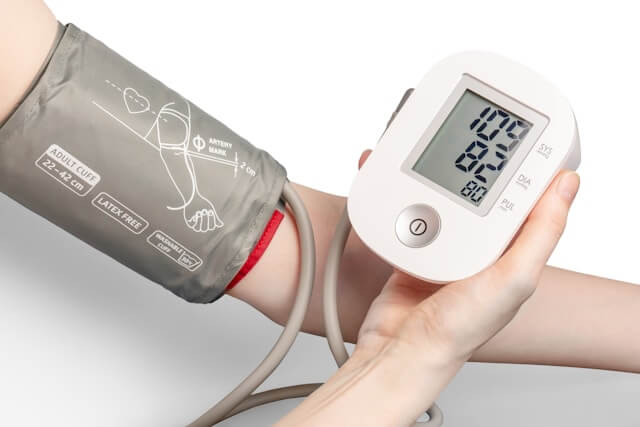It’s no secret that stress and migraine often go hand in hand. After all, stress is a top trigger for roughly 70% of people with migraine. That’s why managing stress can be a game-changer for migraine prevention.
One key player in your body’s relaxation response is the vagus nerve. It helps shift your body out of stress mode, promoting a sense of calm and building resilience to stress—whether you have migraine or not. In this article, we’ll share how stimulating the vagus nerve can help keep stress and migraines at bay.
What is the Vagus Nerve?
The vagus nerve is the longest cranial nerve in your body. Nicknamed the “wandering nerve,” it weaves from your brainstem, down your neck, and through your abdomen. It connects your brain to your heart, digestive system, and other organs and allows them to communicate.
The vagus nerve belongs to your parasympathetic nervous system. This division of the autonomic nervous system (ANS) is in charge of your “rest and digest” response. It helps you switch out of “fight or flight” mode and bounce back from stress. Your vagus nerve sends signals that affect your heart rate, breathing, digestion, immune response, and more. It unlocks your relaxation response and has a powerful influence on health and well-being.
Benefits of Vagus Nerve Stimulation
The vagus nerve plays a crucial role in your physical and mental health. And by activating the vagus nerve you can harness its power. Research shows that stimulating your vagus nerve can help improve vagal tone—a measure of vagus nerve activity. Vagus nerve stimulation is linked with a host of benefits. Studies suggest it can help:
● Reduce blood pressure
● Slow heart rate
● Lower inflammation
● Build stress resiliency
● Ease anxiety
● Alleviate depression
● Minimize epileptic seizures
● Relieve migraine and cluster headache pain
With benefits like these, you’re likely wondering, “Okay, so how do I stimulate my vagus nerve?” So, let’s dive in.

How to Stimulate the Vagus Nerve
Just like your muscles need exercise to work optimally, the same is true for your nerves. Fortunately, there are many ways to keep the vagus nerve in good shape. One option is to use a vagus nerve stimulation device. These devices send electrical impulses through your vagus nerve to your brain.
However, these devices don’t all work the same. Some are implanted in your chest below your skin and require surgery. These devices are FDA-approved for epilepsy, depression, and stroke rehabilitation. They send electrical impulses to calm any irregular brain activity.
Newer, non-invasive vagus nerve stimulation devices are also available. Rather than requiring surgery, these devices are placed on the skin of the neck or inside the ear. The good news? They show promising results for those suffering from migraine and cluster headaches. There are also a variety of at-home vagus nerve exercises that can improve vagal tone.
Can Vagus Nerve Stimulation Relieve Migraine?
According to research, yes!
One 2023 review found that non-invasive vagus nerve stimulation (nVNS) significantly reduced migraine pain. On top of that, auricular VNS devices (placed in your ear) reduced the intensity of migraines and the number of migraine days. Other studies echo these results. According to a 2018 study, noninvasive VNS can help alleviate migraine attacks and relieve acute pain. Best of all, results were similar to triptan medications—but without the risk of adverse side effects. The study concluded that non-invasive VNS is a safe, well-tolerated option for migraine relief.
As of now, only one vagus nerve device (gammaCore) is FDA-approved for migraine and cluster headaches. As the research expands, the list of available options likely will too. If you have migraine and are curious if VNS is right for you, talk with your doctor.
Vagus Nerve Exercises: 7 Ways to Increase Vagal Tone
Vagus nerve stimulation devices are helpful tools, without a doubt. But you don’t need high-tech gadgets to activate your vagus nerve. Many simple vagus nerve exercises can help you improve your vagal tone, calm your mind, and build your resilience to stress. And since stress is the leading migraine trigger, the more resilient you are to stress, the better!
Here are seven vagus nerve stimulation exercises to try:
Deep Breathing
About 80% of vagus nerve signals go from your body to your brain. And one of the simplest ways to influence those signals is your breath.
Taking slow, deep breaths activates your vagus nerve, helping you shift into a calm, parasympathetic state. Ideally, a rate of about six breaths per minute is the sweet spot. Allow your belly to expand and aim for longer exhales than inhales. This helps trigger the relaxation response.
Meditation
Meditation and mindfulness can also increase vagal tone. They help you stay in the present moment and clear away mental chatter. This can help you shift out of stress mode and find a sense of inner calm.
For example, one study found loving-kindness meditation increased positive emotions and improved vagal tone. If you’re new to meditation, many apps like Calm, Insight Timer, and Headspace can guide you through it.

Massage
Massages are the ultimate relaxation tool—and for good reason. They unwind muscle tension and relieve stress and anxiety. And part of their magic may stem from vagus nerve stimulation.
Research shows that getting a neck or shoulder massage can activate the vagus nerve and trigger a relaxation response. Even a foot reflexology massage can help improve vagal tone, according to another study. This is surprising, considering the vagus nerve doesn’t run through the feet!
Exercise
Physical activity doesn’t just strengthen your muscles, it tones your vagus nerve too. Research shows exercises like interval and endurance training can improve vagal tone.
But you don’t need to hit the gym or run a marathon to give your vagus nerve a workout. Even gentle exercises like yoga can help improve vagal tone.
Singing, Humming, & Gargling
If you want to activate your vagus nerve, try belting out your favorite tune. Why? Well, your vagus nerve runs through your neck. Anything that vibrates your vocal cords, like singing loudly, stimulates your vagus nerve.
If singing isn’t your thing, no worries. Humming and gargling can offer a similar effect.
Laughter
Laughter isn’t just good for the soul, it’s good for the vagus nerve, according to a 2022 study. It reduces blood pressure and increases heart rate variability (HRV), a marker of vagus nerve function.
Not to mention, laughter just feels good. It boosts your mood, strengthens the immune system, and melts away stress. So invite more humor into your life. Watch comedy shows, hang out with funny friends, and let yourself LOL.
Cold Exposure
One of the quickest ways to stimulate your vagus nerve is to place an icepack on the side of your neck. According to research, this can help trigger a relaxation response in as little as 16 seconds. It slows down your heart rate and improves HRV.
Ice packs aren’t the only option though. One study found dunking your face in ice water can stimulate the vagus nerve too. That said, submerging your face in cold water could aggravate migraine in some people. So, if cold temperatures are one of your migraine triggers, this may not be a good fit.
The Bottom Line
- https://pmc.ncbi.nlm.nih.gov/articles/PMC3475609/
- https://www.ncbi.nlm.nih.gov/books/NBK537171/
- https://www.massgeneral.org/news/article/vagus-nerve
- https://health.clevelandclinic.org/vagus-nerve-stimulation
- https://www.mayoclinic.org/tests-procedures/vagus-nerve-stimulation/about/pac-20384565
- https://pmc.ncbi.nlm.nih.gov/articles/PMC10213755/
- https://pmc.ncbi.nlm.nih.gov/articles/PMC6070381/
- https://www.prnewswire.com/news-releases/gammacore-receives-fda-clearance-for-the-acute-treatment-of-pain-associated-with-migraine-headache-in-adult-patients-300589314.html
- https://pubmed.ncbi.nlm.nih.gov/31728781/
- https://pmc.ncbi.nlm.nih.gov/articles/PMC6189422
- https://journals.sagepub.com/doi/10.1177/0956797612470827
- https://pmc.ncbi.nlm.nih.gov/articles/PMC7479151/
- https://pubmed.ncbi.nlm.nih.gov/22314629/
- https://pmc.ncbi.nlm.nih.gov/articles/PMC5121464/
- https://pmc.ncbi.nlm.nih.gov/articles/PMC4959333/
- https://www.degruyter.com/document/doi/10.1515/humor-2021-0111/html
- https://pmc.ncbi.nlm.nih.gov/articles/PMC6334714/
- https://pmc.ncbi.nlm.nih.gov/articles/PMC9649023/


